In Roman times, the people believed that certain things brought either consequences or good luck. When it came to flowers, particular flowers would bloom in a particular month which would ensure good luck to those born that month. And thus, a sort of symbolism and meaning to these birth flowers came to be. Every single month has a birth flower and sometimes there are two birth flowers associated with every month. This depends on the culture, however, and there can be disagreements over this. When it comes to April, there are two birth flowers: daisies and sweet peas. Let’s take a look at the April birth flowers — the symbolism and meaning of daisies and sweet peas.
All About Daisies
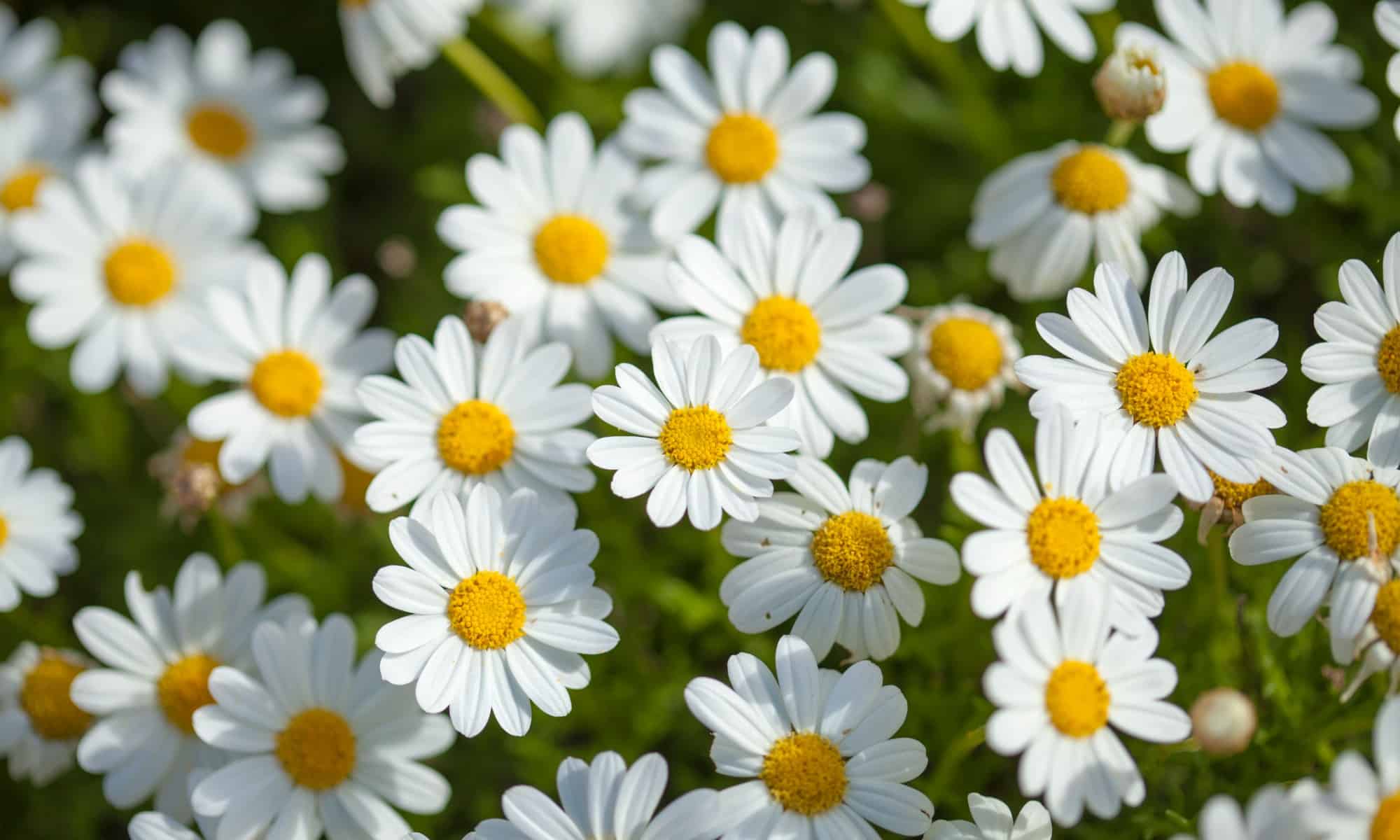
Interestingly enough, the national flower of the Netherlands is the daisy, although many people think it is the tulip. It is also the national flower of Denmark.
©iStock.com/tamara_kulikova
The daisy (Bellis perennis) is a perennial flower that can grow up to eight inches tall. Although they can be of various flowers, the majority of them have yellow eyes and white petals. Daisies can be found in lawns and gardens, but also in meadows and even at the side of the road. These flowers bloom from March to September.
Origin of Daisies
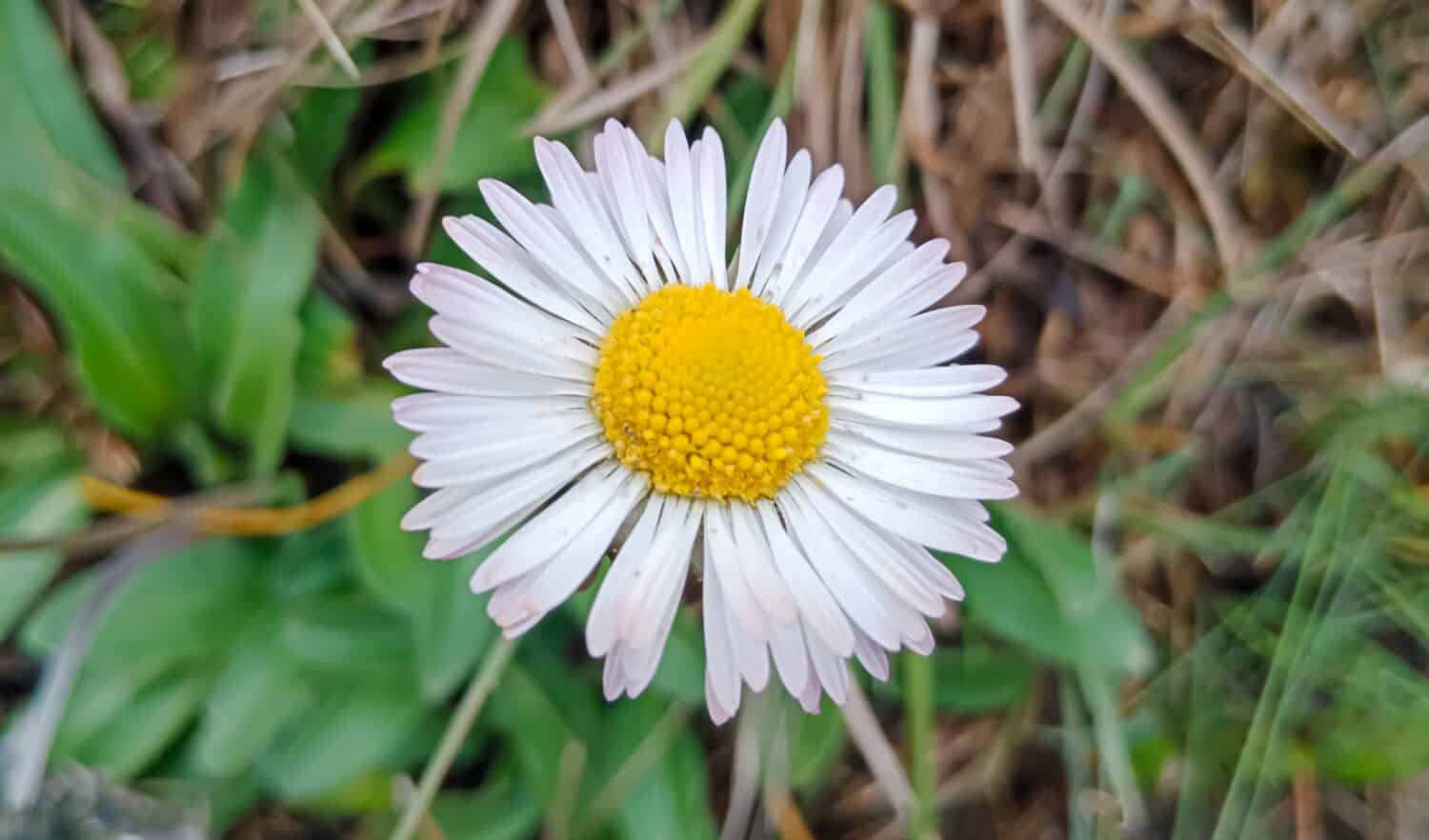
It is believed that King Henry VIII of England ate daisies to treat his stomach ulcers.
©Carol La Rosa/Shutterstock.com
Native to Europe and Africa, the daisy is part of the aster family (which also includes sunflowers and that’s why they look so similar). Egyptians used the daisy for medicinal purposes. Eventually, teas were made from daisies to treat various medical ailments. The name daisy comes from the words, “day’s eye” because the flower opens up during the day and closes at night. The daisy has also been a common female name in various countries including England and Mexico (where it’s Margarita).
Symbolism and Meanings of Daisies
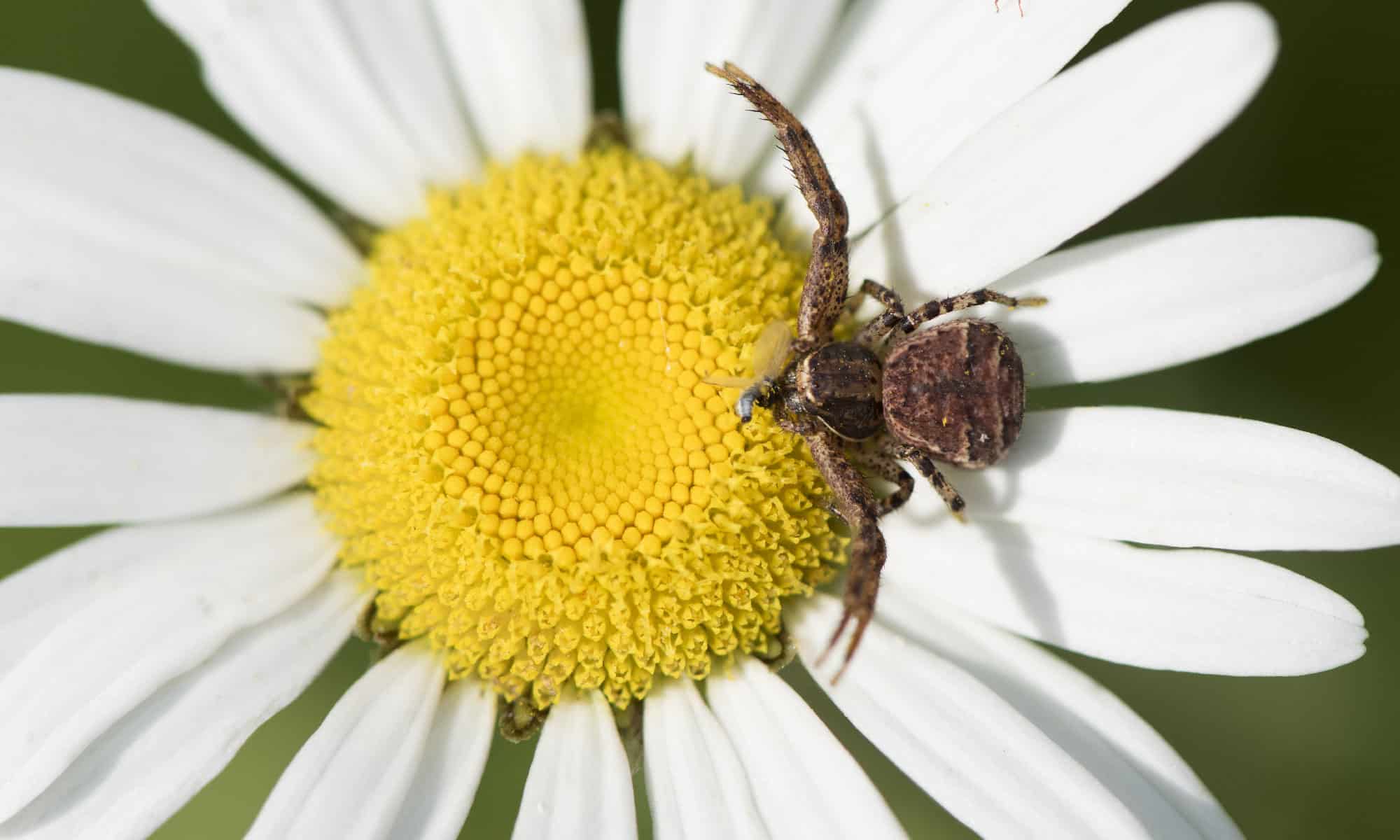
There are many things that daisies mean and symbolize, including innocence and purity.
©Brandt Bolding/Shutterstock.com
Throughout time, the daisy has represented so many things. Every culture has a distinct representation of what the daisy means to them. For example, in the Celtic culture, the gods would put daisies on a child’s grave to make the parents happy. Romans believed the daisy represented Belides the nymph, who turned into a daisy because she wanted to escape from Vertumnus. Even Norse mythology has a story of its own about the daisy, which is the flower of the Norse goddess Freyja (she is the goddess of love, beauty, and fertility).
Daisies symbolize purity and innocence, which is why it’s long been associated with true love, children, and motherhood. Victorian England also believed daisies symbolized friendship that could tell secrets without telling anyone.
About the Sweet Pea
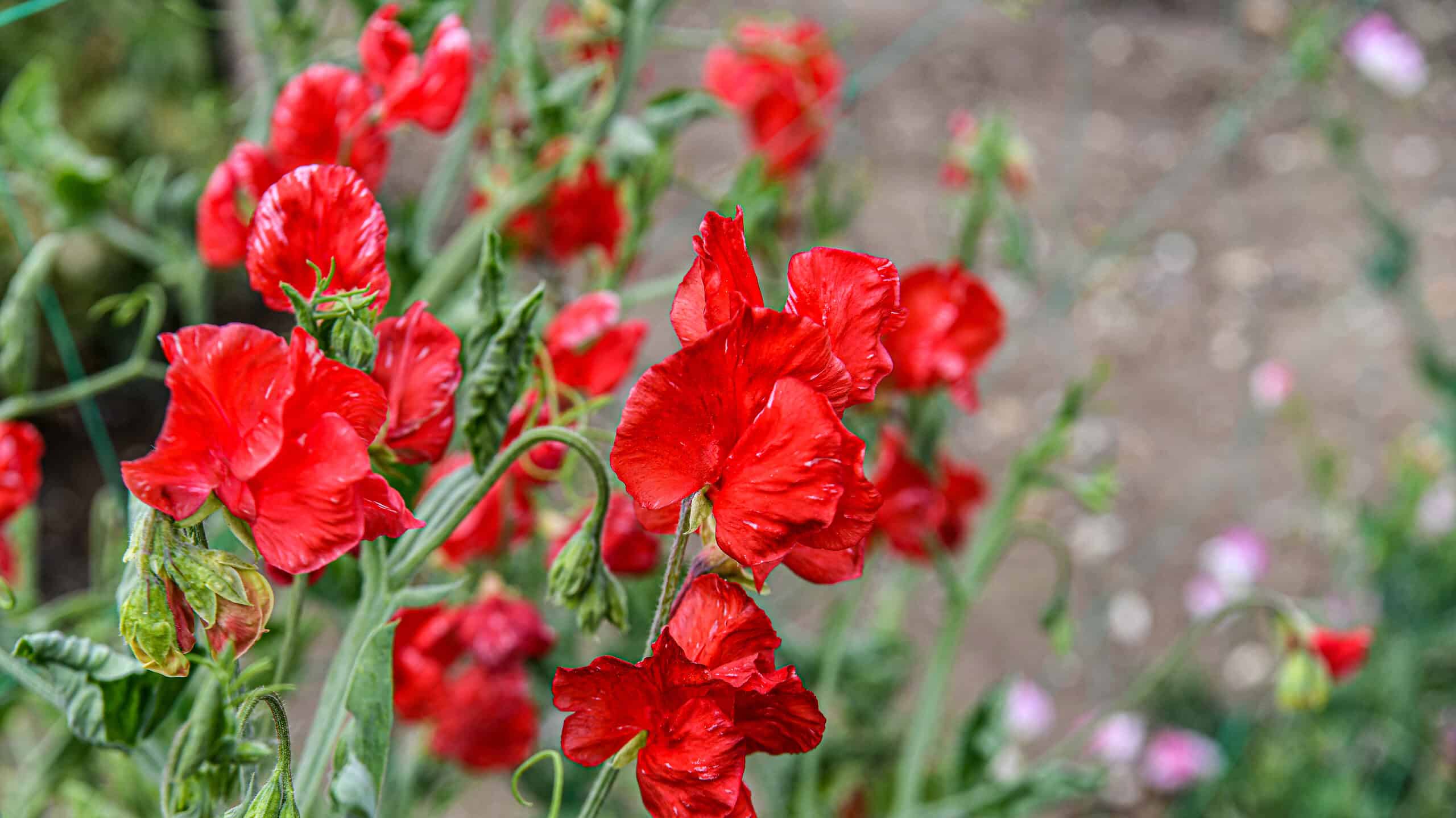
There are more than 100 types of sweet peas in the world and can be of many colors, too.
©Anna Derewacz-Czuprynska/Shutterstock.com
Like many months of the year, April also has two birth flowers. The other one is the sweet pea (Lathyrus odoratus). It sounds like it looks green, but in actuality, the sweet pea is purple, pink, white, or other similar colors. These flowers are annual ones that love the sun. They can grow up to 10 feet tall and can be garden flowers, but also grow out in nature. The sweet pea usually blooms throughout the spring and even in summer and autumn. Furthermore, the sweet pea is fragranced, which is why in Latin “odoratus” means perfumed.
Origin of Sweet Peas
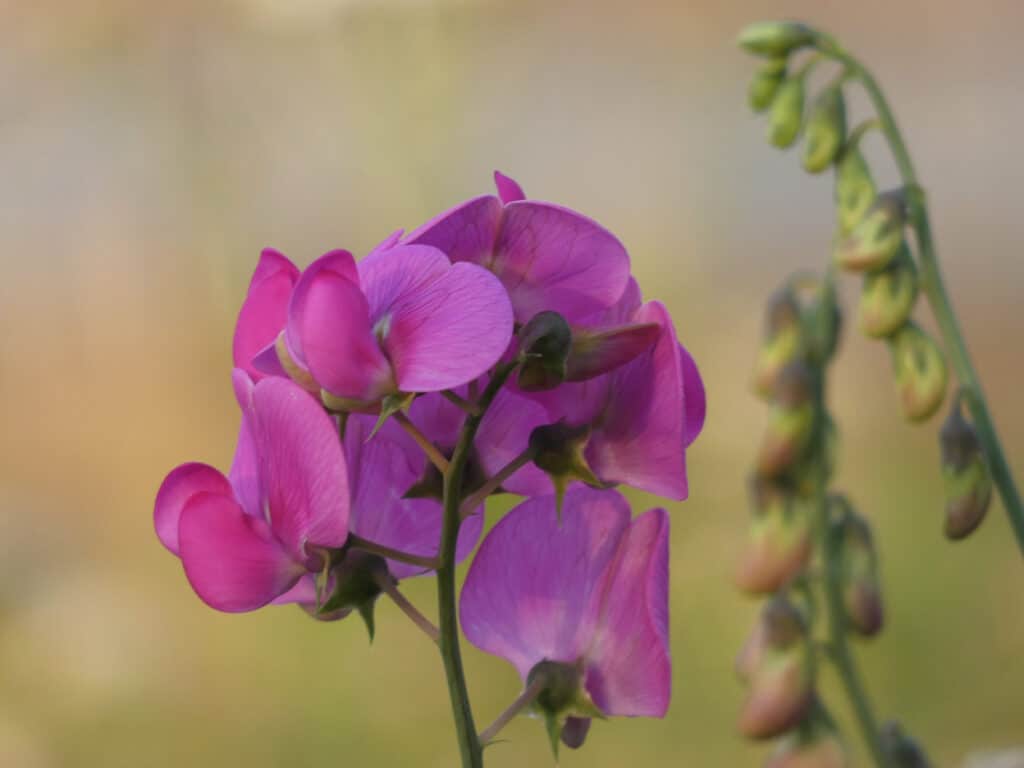
Henry Eckford, a Scottish nurseryman and sweet pea breeder, is known as the Father of the Sweet Pea.
©Slawinka/Shutterstock.com
The sweet pea’s history is a fascinating one. The monk Franciscus Cupani discovered the flower in Sicily in 1695. He then gave seeds to various horticulturists all over Europe to ensure its planting throughout the continent. They eventually made themselves to America and the rest of the world. But it was in the 19th century that the sweet pea was developed more carefully to create more colors. These flowers became so popular that they were part of an exhibition in Victorian England in 1901. In fact, the sweet pea was the favorite flower of Queen Juliana of the Netherlands.
Symbolism and Meanings of Sweet Peas
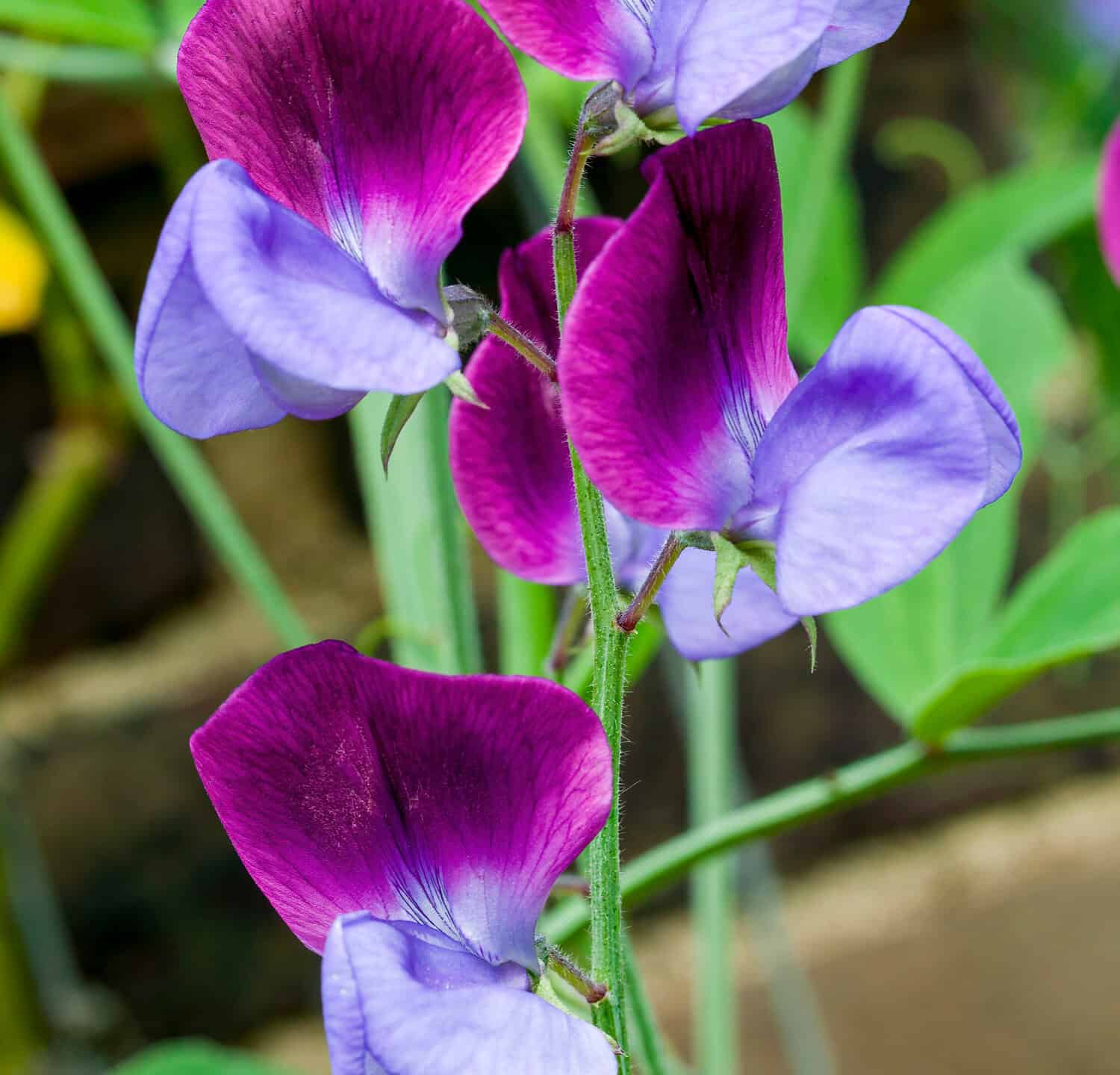
The sweet pea is a fragranced and popular flower that means various things to different cultures.
©Tony Baggett/Shutterstock.com
The sweet pea symbolizes many things — and it depends on the culture what the beautiful, fragranced flower could mean. For example, in France, the flower was commonly used to give to brides about to be married. It was believed that it brought them good luck on that day and the marriage. Sweet peas also mean gratitude and kindness, and it is a good flower to give to your friends. Lastly, the flower also signifies saying goodbye or good wishes and is a good flower to give thanks for someone’s hospitality as you leave.
The photo featured at the top of this post is © Alexmia/iStock via Getty Images
Thank you for reading! Have some feedback for us? Contact the AZ Animals editorial team.







